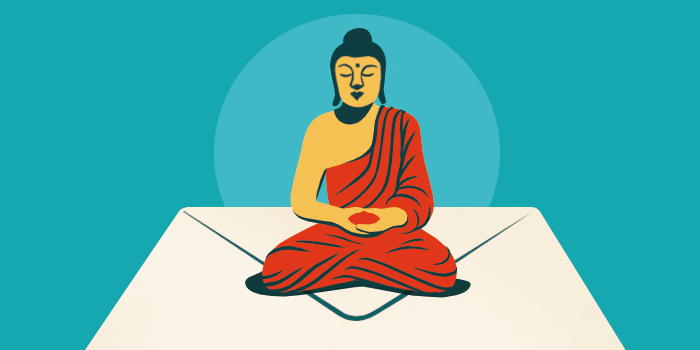What is Vajrayana Buddhism?

The Wheel of Life (bhavachakra) is a common motif in Vajrayana art, representing samsara, the cycle of suffering and rebirth; the six realms of rebirth; and the three poisons that keep beings trapped in samsara: greed, hatred, and delusion. | Wheel of Life. Tibet; early 20th century. Pigments on cloth. Courtesy of the Rubin Museum of Art. Formerly from the Collection of Navin Kumar, New York. C2004.21.1 (HAR 65356)
Vajrayana is a form of Mahayana Buddhism that originated in northern India around the 5th century CE, took root in Tibet in the 7th and 8th centuries, and then spread across the Himalayan region. It is widely known as Tibetan Buddhism though tantric Buddhism is also found in Japan, in the Shingon and Tendai traditions. Vajrayana takes its name from vajra, Sanskrit for “diamond” or “thunderbolt,” suggesting the power of its methods.
Although Vajrayana shares with the Mahayana schools generally the view that we are already perfected and can awaken in a single lifetime, Vajrayana considers itself the fastest way to enlightenment. Its canon consists of texts known as the Kangyur (sutras and tantras considered to be the words of the Buddha) and the Tengyur (commentaries).
Vajrayana, like Mahayana, makes no distinction between samsara and nirvana: passions and aversions alike are embraced as skillful means to awakening. Though Vajrayana upholds the Mahayana bodhisattva ideal, its pantheon of celestial beings is more extensive, including a wealth of fierce protector deities and dakinis (female deities). Deity yoga—whereby a student takes on the identity of a chosen deity who represents enlightened qualities—is a central practice, guided by the guru, or lama, the master who initiates the student into esoteric practices. Ritual is key, including repetition of mantras (sacred syllables and verses), visualization of mandalas (sacred diagrams), sacred hand gestures (mudras), and prostrations. Ngondro, preliminaries, are prerequisites for higher tantric practices. The highest practices involve the symbolic union of the feminine (wisdom) and masculine (compassion) principles. Tantric practices are largely kept secret, to preserve the sanctity of the teachings and protect practitioners from energies they have not yet been trained to handle.
Of the four main schools of Tibetan Buddhism, the oldest is the Nyingma, whose founder is held to be the 8th-century Indian master Padmasambhava, also known as Guru Rinpoche. Revered as the second Buddha, he is said to have hidden treasure texts (termas) to be discovered later both physically and in the mindstreams of tertons, or sacred masters. The Sakya school, headed by the Sakya Trizin (a hereditary title) is closely associated with the Hevajra-tantra, a text on nondualism, symbolized by the sacred union of the deity Hevajra and his consort. The Kagyu school traces its origins and practices to the Indian yogi Tilopa, the master Naropa, the translator Marpa, and his disciple Milarepa, Tibet’s poet-saint. The Kagyu school introduced the tulku system, the practice of recognizing reincarnations of great masters, thus continuing their lineages. The Gelug, the newest of the major Vajrayana schools, is a monastic sect incorporating elements of earlier schools; its most notable leader is the Dalai Lama.

Tricycle is more than a magazine
Gain access to the best in sprititual film, our growing collection of e-books, and monthly talks, plus our 25-year archive
Subscribe now